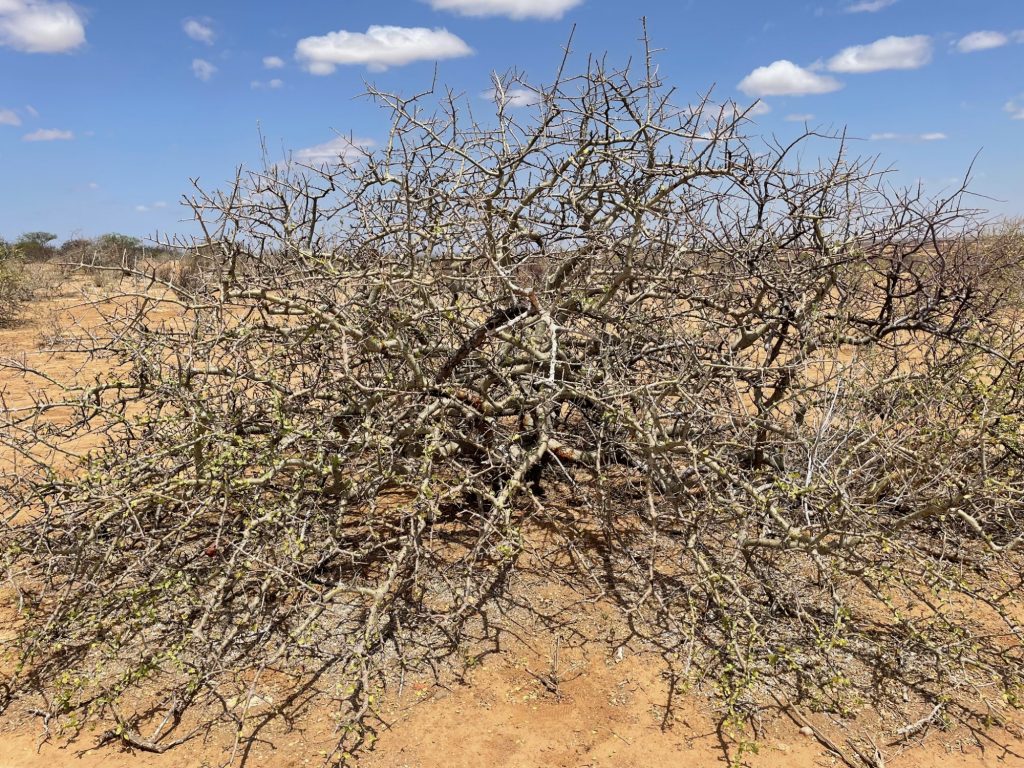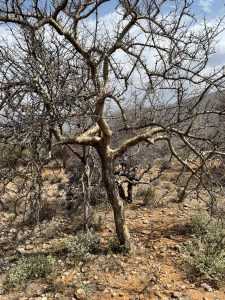Myrrh

“Warm, spicy, woody. This resin was treasured by ancient royalty and is still today and essential friend and base note.”
Basic Facts
● Species: Commiphora myrrha
● Common name: Myrrh
● CAS Number: 84929-26-0
● Chemical composition: Furanoeudesma-1,3-diene, curzerene, lindestrene
Documentation
All documents and analyses are available on request.

About the Trees
Myrrh trees are generally pretty small, growing to a maximum of 5 meters tall. They have spines and white to greyish-red bark that’s papery and peeling. The leaves are stiff, greyish-green, and grow with a characteristic three leaflets, with the middle leaflet being the biggest one. The flowers are four-petaled and rather tubular, typically whitish. The fruits are quite hard and not fleshy, dispersed by wind rather than animals. The trees prefer dry bushland, most often growing in stony soil, between about 100-950 meters in elevation.
The Somali name for the myrrh tree is “Dhidin,” although it’s also commonly referred to by the name of the myrrh resin, “Malmal.”
The essential oil of the resin is characteristically dominated by three components: furanoeudesma-1,3-diene, curzerene, and typically to a lesser extent lindestrene. Whether furanoeudesma-1,3-diene or curzerene is the dominant component seems to vary between regions and from plant to plant, and interestingly doesn’t seem to significantly affect the scent. Myrrh is characteristically warm and spicy, a deep, full-bodied scent that fills the nose with just a hint of sweetness.

Harvesting Systems
Myrrh is harvested much like frankincense, by making small cuts into the bark and waiting for the resin to seep out. The harvesters generally wait 14-20 days for the resin to harden before scraping it off and re-opening the wound to allow more resin to come out. The harvest season typically lasts for 8-12 tapping cycles, and may take place either in the summer or the winter, depending on the area and the harvester’s inclination. The trees are supposed to receive up to 12 cuts, depending on their size.
Unlike frankincense, myrrh trees are rarely owned by a specific individual. As they mostly grow in grazing land, they can typically be harvested by anyone who is local to that area and has the inclination to do so. Often, harvesters of frankincense will harvest myrrh as well during the off-season for frankincense. While this kind of open-access system might generally cause sustainability concerns, the market for myrrh is small enough relative to the number of trees that there has been little overharvesting.
Ordering Details
Resins can be ordered in any quantity and are shipped from Berbera, Somaliland. The resin can be either cleaned (bark removed) or uncleaned, depending on your preference.
